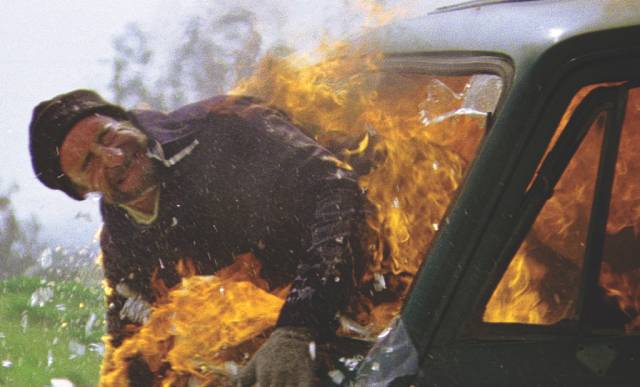
It’s that time of year again – have to look back and think about whether the time I’ve spent watching movies has been worthwhile. Here, I glance back at eleven disk releases which stood out for me.

Yet more recent viewing, ranging from several documentaries about the intertwining of personal identity and the cultural products we attach ourselves to and consume to unsettling explorations of sex, violence and misogyny and an ambitious, though not entirely successful, work of folk horror from Switzerland.

A wildly varied selection of recent releases from the BFI, with Pat Jackson’s Western Approaches (1944) transforming propaganda into art via Jack Cardiff’s Technicolor photography; Roddy McDowall’s The Ballad of Tam Lin (1970) infusing folk horror with the Hollywood glamour of Ava Gardner; and Ken Russell turning the famous 1816 house party presided over by Lord Byron on the shores of Lake Geneva into a fever dream of the Romantics’ fascination with love and death in Gothic (1987)

Recent BFI releases offer a selection of amateur and professional short films from the 1950s to the ’80s in volume 3 of Flipside’s Short Sharp Shocks series, as well as a provocative documentary lecture from filmmaker Nina Menkes which asserts that the apparatus of cinema itself is gendered and weighted against women.

Sophie Compton & Reuben Hamlyn’s Another Body (2023) is an unsettling documentary which is also a horror movie and a detective story; when a college student discovers that she’s a victim of deep-fake revenge porn and that the legal authorities can’t/won’t do anything about it, she sets about tracking down the identity of her victimizer – which takes her to really disturbing corners of the Internet – and regains some control over her own identity.

Alexandre O. Philippe’s Lynch/Oz explores the connections between Victor Fleming’s The Wizard of Oz (1939) and the works of David Lynch through interviews with six filmmakers and a critic, discovering numerous reference points though the the ways in which inspiration affects meaning remain frustratingly unclear.

More recent viewing, with excellent restorations of classic fantasies by Arrow – Roger Vadim’s Barbarella (1968) and John Milius’ Conan the Barbarian (1982); a pair of impressive German film school projects – Tilman Singer’s Luz (2018) and Lukas Feigelfeld’s Hagazussa (2017); a couple of entertaining Australian features which mix fiction and documentary in interesting ways – Brian Trenchard-Smith’s Stunt Rock (1978) and Aaron McCann and Dominic Pearce’s Top Knot Detective (2017): and Shredder Orpheus (1990), a low-budget indie version of the Orpheus myth made by Seattle musicians and skateboarders.